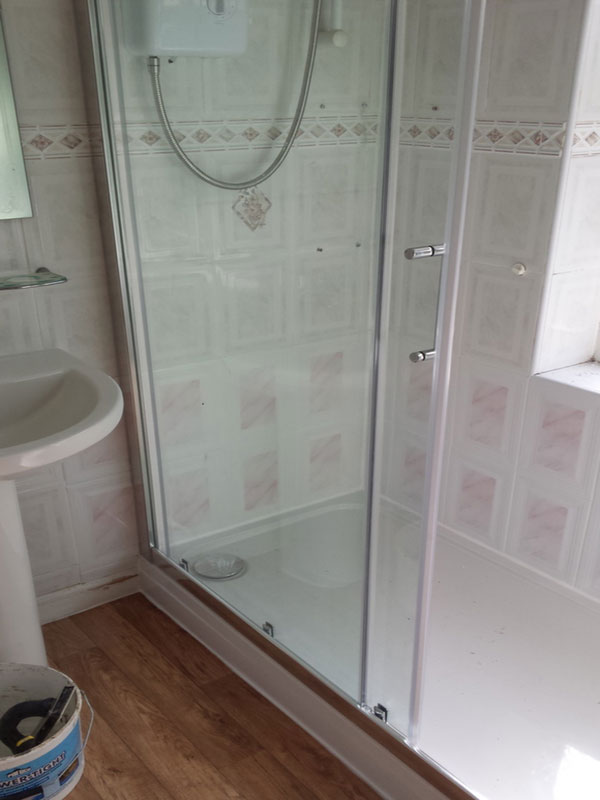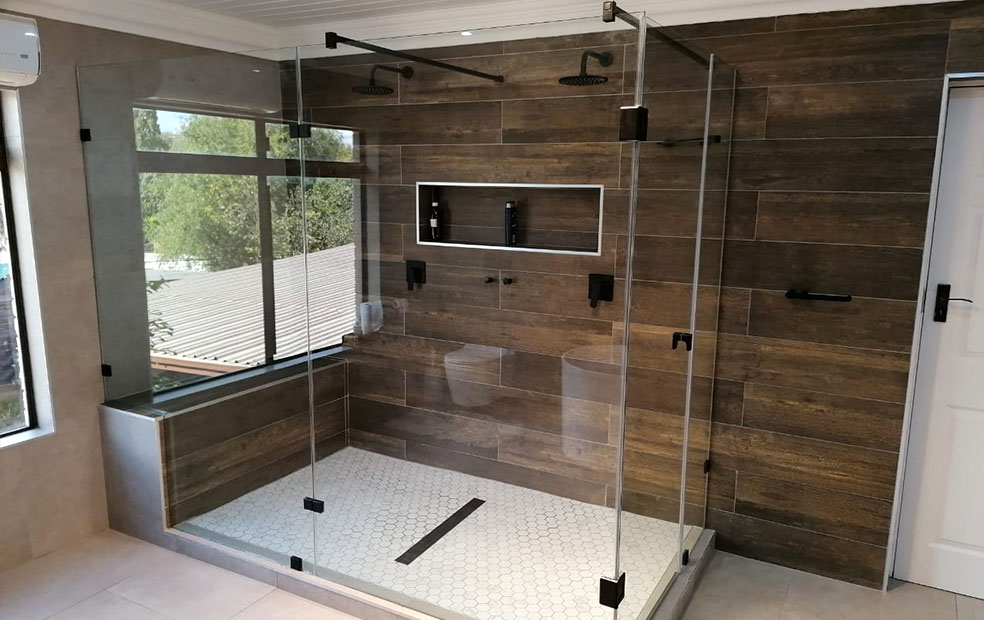Were you trying to find resources concerning How to Install a Shower Enclosure ?

A successful shower setup requires careful preparation and also a great deal of work. In many cases, you will certainly need to do three types of jobs: framing wall surfaces, installing the plumbing, and also completing wall surfaces.
Different Sorts Of Shower Units
- Push-on Mixer: The pipe as well as spray parts of the push-on mixer shower device can be linked to the bathroom tap as per your need, as well as the water temperature can be adjusted using the taps. Push-on mixers are cheap and exceptionally basic to install. However, although the hose pipe link is basic, it is conveniently dislodged. In addition, it is inconvenient to change the temperature.
- Bath/Shower Mixer: The hose pipe as well as spray of this type of shower are incorporated with a bathroom mixer tap, and also the temperature can be readjusted via the bathroom faucets. It is a really cheap option and also no additional plumbing is entailed. Nonetheless, the bath/shower mixers additionally suffer from troublesome temperature control options.
- Manual Mixer: The tube and also spray of a hands-on mixer shower unit are a part of the wall surface system and the cold and hot water materials are attached to a single shutoff The temperature as well as pressure of the water are controlled via either one or a variety of knobs (in a lot more expensive showers). Although temperature level control is much easier in hands-on mixer types, they are extra expensive than the formerly stated mixers. They also require additional plumbing of hot and cold water system pipelines.
- Thermostatic Mixer: The hose and spray of this shower type belong of the wall surface device and the hot and cold water materials are attached to a single valve here too. It is complete with a built-in stabiliser to self-adjust the water temperature level as well as to avoid it from coming to be also hot. One of the largest benefits of a thermostatic mixer shower type consists of practical temperature level control. Nevertheless, it is the most costly of the various mixer choices.
- Power Shower: A power shower is a solitary system having a powerful electrical pump that is capable of changing both the water stress and temperature level. This type of shower can be fitted if there is supply of water from a cold water tank and also a hot water cylinder. A power shower makes the modification of both stress and temperature simple. On the other hand, it is unsuitable for water heated up straight by the shower or where the water is provided by a combination boiler under mains pressure.
- Electric Shower: An electric shower is plumbed right into a mains cold water supply and it warms the water electrically. It is very important to note that for this shower type to be mounted, the mains pressure needs to be a minimum of 0.7 kg/sq centimeters (10lb/sq in). The device permits the temperature level and pressure to be adjusted using a knob. Models with temperature level stabilisers are better as they remain unaffected by various other faucets somewhere else being used within the household. A significant disadvantage of electric showers is that the control handle just allows for the option of heats at less stress, or lower temperature levels at a higher stress. This is troublesome in the winter when the spray is usually weak as well as the keys water is chillier. Nonetheless, this issue is taken on in some models which are offered with a winter/summer setup.
Many Usual Mistakes
- Breaching or overlooking regional code limitations.
- Making use of pipelines that are too little.
- Attaching copper to galvanized without making use of a brass or dielectric fitting between both.
- Not using tape or pipe compound at threaded joints.
- Uneven your components when mounting them.
- Not setting up an air gap filling for fixtures.
- Cutting supply stub outs also brief to set up the shutoff valves onto after the completed wall is in area.
- Not correctly aligning tubes into fittings or quit shutoffs. (Forcing the nut onto the compression ring at an angle when the tubes is at an angle will cause a leakage.).
- When turning the water back on in your home, constantly run the outside tube valve or purge your bathrooms to bleed dirt as well as air from the lines. This particles can cause problems in your sink faucets and other plumbing trim.
Preparation.
To start with, you need to pick the sort of shower that you desire to install. It is very important to identify whether the chosen shower can dealing with specific systems and also can control a safe degree of water with the central heating boiler. The majority of shower systems nowadays are made to be adaptable to various water pressures (such as kept warm water and cool mains).
It is likewise important to consider the water stress and the preparation of the piping as well as drain for the shower.
Approach.
Relying on the kind of shower you want to mount, the shower head have to either be suited order to prevent its contact with the water in the bath listed below or the base tray, or it must have a check valve.
Prior to starting, it is recommended to note the placements of the shower head and control, and also to intend the pipe-work included. In addition, the water drainage system to remove the waste water will certainly need to be prepared. Both placements of the wire route and also the shower button will additionally require to be taken into consideration if a rapid or electric shower device is being mounted.
Utilize the guideline guide provided with the shower unit to fit the shower control.Before fitting the pipes that will supply the water to the shower system, it is essential to cut off the supply of water. In order to protect the pipelines, they must be provided a water resistant covering as well as likewise fitted with separating valves. The pipes can after that be hidden into the wall surface as well as plastered over to neaten the general appearance.
Fit the base tray, shower head, and also installations.
Connect the major shower control to the pipes that will be supplying the water (This may require a female screw string adapter).
Reconnect the water system and also examination the pipelines for any leaks, as some may need tightening.
If you are mounting an electric shower, keep in mind to switch off the electricity supply before making any kind of electric links. As soon as these connections have been made (there ought to be assistance within the instruction manual), the power supply can be switched back on.
Adjusting Water Stress to Fit Your Shower.
The cold water tank can be raised to a better elevation (in some cases as little as 150mm (6inches)) by installation a solid wooden support below it - perhaps made up of struts and also blockboards. If you select this option, the primary and also circulation pipelines will likewise need to be elevated to satisfy the new height of the storage tank.
Conversely, a booster pump (a solitary pump or a dual/twin pump) can be fitted. Whichever kind is selected, it must be connected right into the power supply in order to operate.
Piping and also Water drainage.
It is best to make use of 15mm size supply pipes, and make the runs to the shower as brief as well as straight as possible so as to keep maximum pressure and also minimise warm loss. In addition, by minimising making use of joints for pipeline corners, you can lower the resistance in the circulation of the water. You can achieve this by flexing the pipes instead.
How Do You Install a Shower? Follow This Guide
Installing a Shower at a Glance
- Tools & Materials: Level, electric drill, caulk, hole saw, cedar shims, shower unit
- Step 1: Drill pilot holes
- Step 2: Prep fixture holes
- Step 3: Move unit into place
- Step 4: Caulk corners and base
- Step 5: Attach door
- Step 6: Install shower pan
Whenever plumbing is involved in a DIY project, people worry about what might go wrong. The truth is that installing a shower isn’t that complicated, and you can save a lot of money by doing it yourself. You shouldn’t need to make any alterations to your plumbing to complete the job, and most of the tools you need will be provided in your new shower kit.
Can I Install a Shower Myself?
Even if you’ve never installed a shower before, you’ll find this to be a project that is perfectly suited for DIYers with a moderate level of experience. Whether you're doing a bathtub conversion or installing a new stall, most of what you need comes in shower kits that you can purchase from a hardware store. The first thing you need to do is determine what type of shower stall you want.
Single-panel stalls are the easiest to install because they come preassembled. All you need to do is put them in place. Multi-panel showers require a few additional steps, but you’ve got more control over the appearance of your unit. Multi-panel units are also much easier to handle if you’re going to do the installation without any help.
Be sure to take all appropriate safety precautions, such as wearing eye protection and gloves. When you’re removing or installing a shower unit, you might kick up debris that could hurt your eyes. You’ll also need to work with equipment that will get extremely hot, so be sure to have safety gloves handy.
Tools and Materials
- 2- to 4-foot level
- Electric drill with a 1/8-inch drill bit
- Caulk
- 2-inch hole saw
- Cedar shims
- The unit itself
Before You Begin: Prep the Space
It’s highly important to measure your space accurately before putting the stall in. Measuring from the floor upward and from each corner outward will ensure you’ve got the right measurements. What you’re looking for is where the plumbing apparatuses are going to come through the stall. Transfer these measurements over to the back of your unit by drawing the locations of these holes using a pencil or marker.
Pull out your old shower and make sure to scrape off all the old caulking. Be thorough because you want to work with smooth surfaces for the best installation. Once you’ve pulled out your existing shower, you need to make sure that the floor is clean and dry. The best way to clean debris is with a shop vacuum, as it’ll soak up water and dirt together.
If you’re experiencing any plumbing issues, such as low water pressure, this is a perfect opportunity to solve them. Make sure that the pipes themselves are not in need of patching and clean your showerhead. When you turn the water back on after your project, check the pipes for signs of wear or disrepair. Anything beyond minor repairs should be handled by a plumber, and this is the best time to bring in a professional.
If the floor has any moisture at all, don’t proceed until it’s completely dry. The last thing you need is for the floor to rot or invite mold and mildew into your base. Once everything is dry, apply waterproof wallboard to the walls. This can be attached with screws or nails, then sealed with caulk so that water doesn’t seep into any crevices.

I found that piece about How to Install a Direct-to-Stud Shower Enclosure when doing a lookup on the internet. Sharing is good. Helping others is fun. I praise you for your time. Don't forget to stop by our website back soon.
Click Here To Find Out More
Comments on “How to Expertly Set Up a Fresh Shower Unit: A DIY Solution”